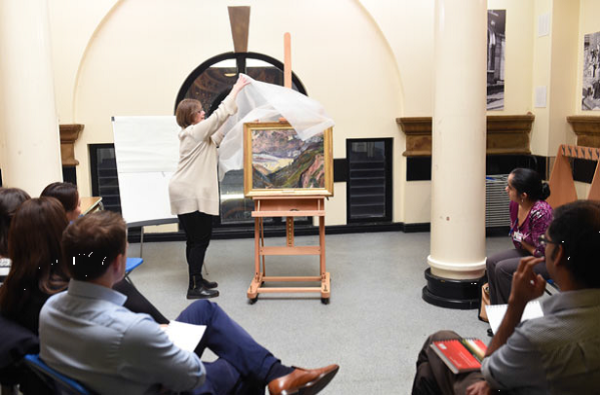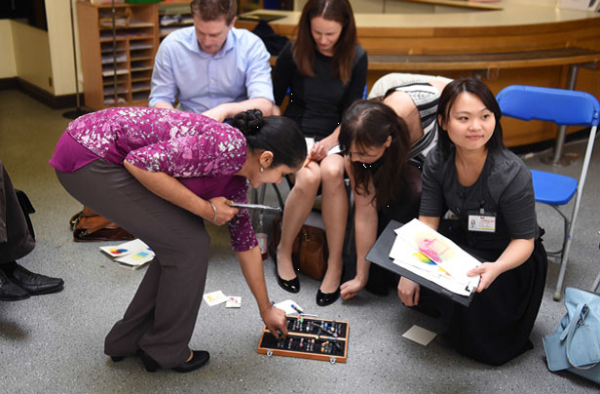What dermatologists can learn from a visual study of art
As a creative hub, past and present, Greater Manchester has a wealth of fabulous art in its galleries and museums: ranging from William Blake, J.M.W Turner, Dante Gabriel Rossetti and Vincent Van Gogh through to Salford’s own L S Lowry.
But what can art bring to the clinical practice of dermatology? That’s the question Honorary Consultant Dermatologist and amateur artist, Professor Chris Griffiths, sets out to explore in his blog about visual literacy for dermatologists.
I have always been very interested in art for its own sake and its potential application to medicine. Indeed, an interest in art and natural history is probably what attracted me to dermatology as a medical student.
To be successful in dermatology, keen observation skills are critical. One has to ascertain whether there is any pattern to a rash and examine the characteristics of the lesions – are they raised or flat, what colour are they etc. One has to look very carefully – actually ‘study’ the skin – as a whole and in key areas, maybe the face or arms. What does the overall pattern – size, shape, colour, texture, number, location, etc. – reveal about a patient’s condition?
However, keen observation is only part of the challenge, the other aspect is the ability to accurately describe and interpret what one sees. Doctors need to have a rapport with their patients about the presentation of their specific symptoms. This visual-to-verbal articulation, particularly in early career dermatologists can, I believe, be improved by applying visual thinking strategies to art.
This idea, originally promulgated by Professor Irwin Braveman at Yale, was reinforced by research, published on a programme between Harvard Medical School and the Museum of Fine Arts, Boston, which aimed to build visual literacy skills for dermatology residents.
A chance meeting with local art historian and educator, Helena Tomlin, led to the opportunity to establish a visual literacy programme for trainee dermatologists in Manchester four years ago.
The initial tranche of workshops, was held at Salford Museum and Art Gallery and at the Whitworth, over a three-month period. Eight higher specialty trainees, attended two-hour weekly workshops which focused on different artworks from the collections. These attendees considered different aspects of the artworks, such as the use of colour, texture, pattern and composition and debated between themselves, presented their ideas and considered the viewpoint of the artist.

In each workshop, participants discussed the similarities between observing and documenting skin diseases in the clinic and exploring the analysis of the individual artworks.

Our analysis of the results, in which trainees gave positive feedback in relation to their clinical observational and descriptive skills, was published in a research letter to the British Journal of Dermatology, and has been followed up by further work published in the Journal of the European Academy of Dermatology and Venereology.
With colleagues, Dr Helen Young (Manchester) and Dr Sarah Walsh (London), I am now involved in running an annual, visual literacy course for European dermatology colleagues, under the auspices of the European Academy of Dermatology and Venereology.
The first programme, last year, included practical activity at Tate Britain and the Wallace Collection. The course has been refined and will be delivered, primarily at these same venues, for twenty European and UK dermatologists in September this year. It will encompass art history and fine art with discussions on Rembrandt, Manet and Turner, led by experts from The Courtauld Institute of Art.
As well as improved clinical observational and analytical skills, visual literacy programmes also result in qualitative improvements in communication, reflection and listening skills for participants.
I use the programme techniques of visual thinking strategy in my clinic and any research that involves observation. Art also benefits me in a personal capacity. I appreciate the genre of northern artists, such as Thompson, Major and Lowry, as well as the practical aspects of drawing, which are relaxing and a form of mindfulness.
